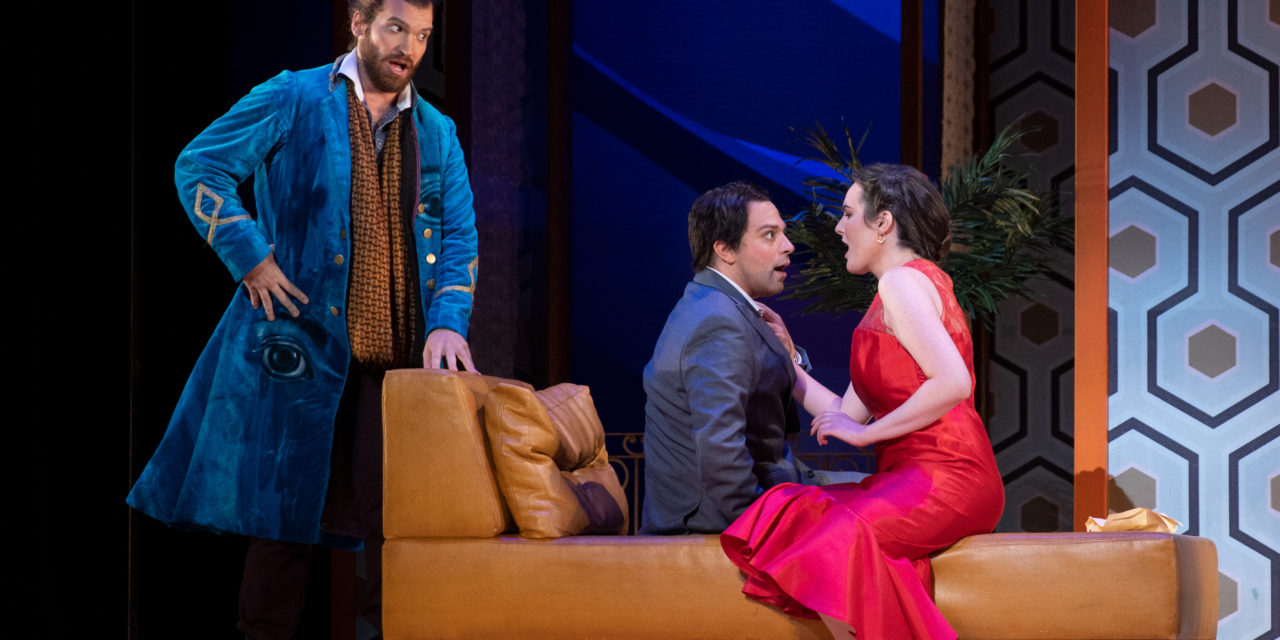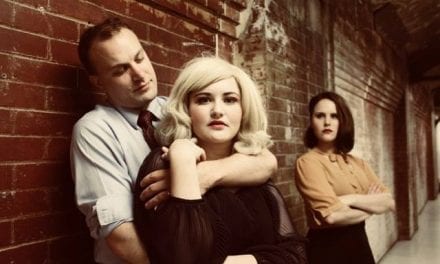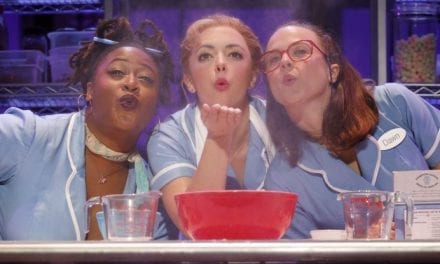SALT LAKE CITY — The Barber of Seville, by Gioachino Rossini, is probably the greatest comic opera ever written. That is not just my opinion, but Giuseppe Verdi’s, as well, and that man knew his operas.

Show closes October 17, 2021.
Written with lightning speed (possibly in as few as 13 days, if Rossini’s own boasts are to be believed), and premiering in February of 1816, The Barber of Seville has perhaps some of the most memorable and delightful music ever written, second only to Carmen. (Especially if you’re a fan of Warner Bros. cartoons, because who can forget “The Rabbit From Seville”? It’s a classic!)
Barber has a timeless storyline, well used over the decades in many forms: a beautiful young girl (Rosina, played wonderfully by Sarah Coit) and a good-looking young suitor (Count Almaviva, superbly sung by Matthew Grills) fall in love. But the girl is living under the care of an older guardian (Dr. Bartolo, well-played by Matthew Burns) who has lecherous eyes for her and the money she inherits when she marries. What’s the catch? The girl cannot marry without her guardian’s consent. However, Almaviva happens to be a count and very rich. So why doesn’t he just go in and take the girl? Well, what fun would that be? Not to mention, like every rich guy, he wants to make sure the girl loves him and not his money.

Photo by Dana Sohm.
So, Almaviva befriends and enlists the town barber, Figaro (terrifically played by Michael Adams), who knows all the town’s secrets and scandals to help him get the girl. Under Figaro’s guidance Count Almaviva—already disguised as a poor student—disguises himself, yet again, as a drunk soldier, as well as a music teacher to weasel his way into Bartolo’s house.
Hilarity ensues.
The Utah Opera production of Barber has been updated from its original period to, I think, the late 1960s, with a few eclectic “non-period” costumes thrown in. Visually, it is a mishmash and, at first, confusing as Figaro appears in this Laugh-In/That Girl world in a vivid blue frock coat from the 1700s. Adding to the confusion are soldiers galloping around on unseen horses wearing uniforms from the Napoleonic War, and the visual style of Amanda Seymour’s costume design is a bit much. But after a while, I just accepted it and enjoy the look of the show. Still, my biggest visual problem with the production is with Rosina’s costumes. Unimaginative and unflattering, most of the opera she wears a white shirt and drab A-line skirt with her hair up in a matronly twist and looks more like Almaviva’s mother than a love interest. It is a strange and ineffective choice for the character and kills any sort of believability that a young count would be interested it this girl.

Photo by Dana Sohm.
Given that, the production is incredibly well-sung by the actors. Coit has amazing dexterity as well as clarity as she sings Rosina’s signature cavatina, “Una voce poco fa,” and Grills has an amazingly clear, adroit and gorgeous tenor voice. Listening to “Ecco ridente in cielo” and “Se il mio nome saper” was thrilling. Adam Lau played Don Basilio, Bartolo’s money-grubbing ally who advances Bartolo’s nuptials with Rosina. Lau has an amazing bass voice and can sing lower than any human should be able to. Berta, the put-upon servant, is always a great comic role, but Julia Gershkoff was great fun to watch. Usually played as an old maid in this production, she is a gorgeous and sassy “upstairs maid,” and her “Il vecchiotto cerca moglie” was a delight to watch and hear.
Highlights of the production were Burns’s Bartolo when he sings, mostly in falsetto, “Quando mi sei vicina.” It is truly hilarious. But when aficionados attend The Barber of Seville, the cavatina they are waiting to hear is Figaro’s “Largo al factotum,” better known as “Hey, Figaro!” The Grand Father of all “patter songs,” the largo is absolutely wonderful and Adams does it proud. Figaro sings faster than any Gilbert and Sullivan hero, and though Adams’s voice was slightly covered on the high notes, he sang the largo with agility and exuberance. Adams is a great Figaro and lit up the stage every time he appeared.
The direction, by Michael Shell, for the most part, was pedestrian and sufficient. Shell relies on too many corny gags and gimmicks that can be seen coming from a mile away. The concept of the show, filled with roosters at every turn, got in the way of the simple comedy of the show. But all in all, Utah Opera’s production The Barber of Seville is worth seeing because all of the singers are superb. And it’s the greatest comic opera ever written!





